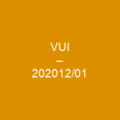Understanding Acetylcholine Receptors: The Key to Neurotransmission
Imagine the human body as an intricate orchestra, with acetylcholine receptors (AChRs) serving as the conductors that orchestrate the symphony of neurotransmitters. This article delves into the fascinating world of AChRs, exploring their types, functions, and implications in various diseases.
Nicotinic vs Muscarinic: The Two Conductors
Acetylcholine receptors come in two main flavors: nicotinic (nAChR) and muscarinic (mAChR). Just as a violinist plays differently from a cellist, these receptors have distinct roles. Nicotinic receptors are like the lead violinists, found at the neuromuscular junction where they trigger muscle contraction through end-plate potentials (EPPs).
Meanwhile, muscarinic receptors act more like the cellos in our metaphorical orchestra, belonging to a superfamily of G-protein-coupled receptors that activate other ionic channels via a second messenger cascade. When bound by extracellular acetylcholine, these receptors can cause a decrease in cardiac activity.
How Do They Work?
Nicotinic AChRs are ligand-gated ion channels composed of five protein subunits, allowing them to respond to nicotine. These channels are non-selective cation channels, permeable to sodium and potassium ions, with some types even allowing calcium ion flow.
In contrast, muscarinic receptors do not act as direct ion channels but activate other ionic channels via a second messenger cascade when bound by acetylcholine. This complex interaction is akin to the intricate choreography in an orchestra, where one instrument triggers another to produce a harmonious sound.
Evolution and Mutations: A Symphony of Change
The evolution of acetylcholine receptors is fascinating, with their origins linked to GABA, glycine, and 5-HT3 receptors. This suggests that these receptors share a common ancestral receptor, much like how different musical instruments in an orchestra have evolved from similar roots.
Minor mutations can convert cation-selective channels into anion-selective ones gated by acetylcholine, demonstrating the flexibility of evolution. These changes are akin to a musician learning to play a new instrument, adapting and evolving their skills over time.
The Role in Diseases
Acetylcholine receptor modulators can be classified based on which subtype they act upon. For instance, nicotinic acetylcholine receptors can be blocked by curare, hexamethonium, and toxins found in snake and shellfish venoms. Neuromuscular blocking agents bind reversibly to nAChRs at the neuromuscular junction, much like how a conductor might temporarily silence an instrument for effect.
Conditions such as myasthenia gravis involve antibodies targeting neuromuscular junction nicotinic acetylcholine receptors. Mutations in AChR genes can lead to congenital myasthenic syndrome (CMS), where defects in nicotinic acetylcholine receptors result in endplate deficiency and autosomal recessive loss-of-function mutations.
Moreover, mutations of the CHRNE gene often cause increased addiction susceptibility by reducing agonist affinity, gating efficiency, and channel opening probability. This is like a musician who struggles to play their instrument as well as they once did, leading to a decline in performance over time.
A Call for Further Exploration
As we continue to unravel the mysteries of acetylcholine receptors, it becomes clear that these tiny proteins hold the key to understanding complex neurological functions and diseases. Just as an orchestra requires careful coordination and practice to produce beautiful music, our bodies rely on precise interactions between neurotransmitters and their receptors.

By delving deeper into the world of acetylcholine receptors, we can unlock new treatments and therapies for a wide range of neurological disorders. The future of neuroscience is bright, with acetylcholine receptors serving as a beacon guiding us towards better understanding and improved health.
You want to know more about Acetylcholine receptor?
This page is based on the article Acetylcholine receptor published in Wikipedia (retrieved on November 27, 2024) and was automatically summarized using artificial intelligence.







